Mark your calendars for a spectacular celestial fireworks display coming up in two weeks. The Perseid meteor shower peaks on August 12th and 13th, with more than 100 meteors per hour expected. The Perseids 2021 could bring us one of the greatest displays in years as they coincide with moonless nights around the peak.
No matter where you live on Earth, there are two great meteor showers happening every year. The Perseid meteor shower from late July to late August and December’s Geminids. They both bring a spectacular celestial show, producing hundreds of meteors in the nights around the peak.
Both of these meteor showers are known as the most reliable night sky events every year, with a zenithal hourly rate (ZHR)* of more than 100 meteors quite warranted.
These days, the Perseid meteor shower is already ramping up, with an increasing number of meteors every night. The peak intensity will happen from August 11th to 14th this year.

And we are finally lucky with the Moon again, as the peak nights come right at the time when there is no Moon out to disturb the observations. The Moon will go down in the early evening, so the whole night will be just a dark sky.
How the weather is going to be around the peak nights is yet to be defined later, as we are still almost 14 days away from those dates. Attached below is the gif animation of the general weather patterns across the United States and Europe, giving us an idea if stable (and potentially clearer) weather will happen for the Perseids 2021.
We will be posting a forecast map for cloud coverage across Europe and the United States once the peak is near. Stay tuned for a detailed cloud forecast around August 10th!
*ZHR – Zenithal Hourly Rate of any meteor shower tells us the number of meteors a single observer would see in an hour of peak activity if it was at the zenith. This is assumed that the conditions are excellent (this means that stars are visible up to magnitude 6.5). The rate that can effectively be seen is nearly always lower and decreases the closer the radiant is to the horizon.
Now, let us give you all the answers you might be questioning about the Perseid meteor shower, and learn how we can photograph meteors.
WHAT IS THE PERSEID METEOR SHOWER
The Perseid meteors are small dust particles, crumbs of comet 109P/Swift-Tuttle, burning up as they hit our atmosphere at about 59 km/s. They are known as one of the most regular and reliable meteor showers, peaking in mid-August of every year. So reliable that they used to be known as tears of St. Lawrence for decades.
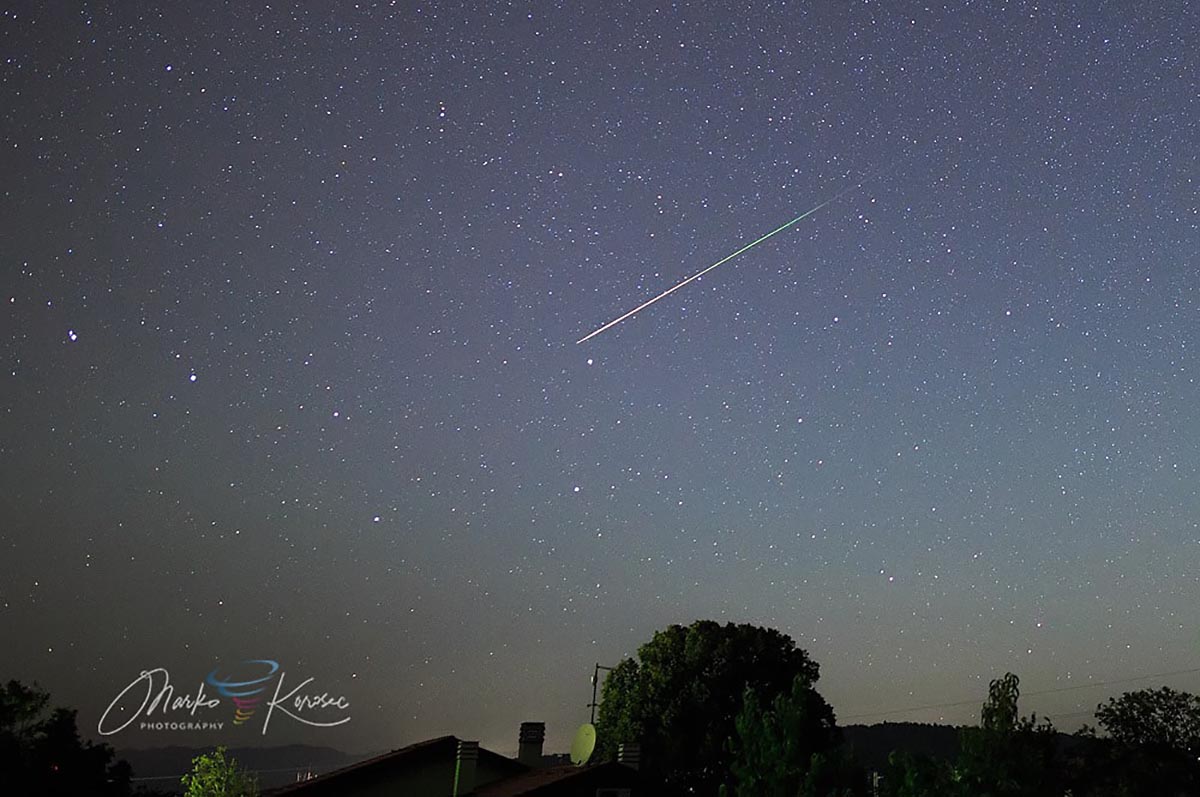
The Perseids often produce a superb meteor shower, active from mid-July to late August. They bring some of the best activity of any annual meteor shower during their peak on August 12/13th.
The Perseid meteor shower is also rich in bright, colorful meteors, including fireballs. The celestial show goes on high in the atmosphere, well above the regular weather, at altitudes of about 100 km – right at the edge of space.
While they may seem to be close, Perseids appearing overhead will be about 100 km away, while those close to the horizon will be 500 km away, or more.
An average bright Perseid meteor is produced by a dust particle (called a meteoroid) only several millimeters across. The brightest Perseids often leave persistent dust trails, that are slowly twisted and contorted by the upper-level winds.
They can last several tens of seconds if you watch them with the naked eye, minutes if you use binoculars.
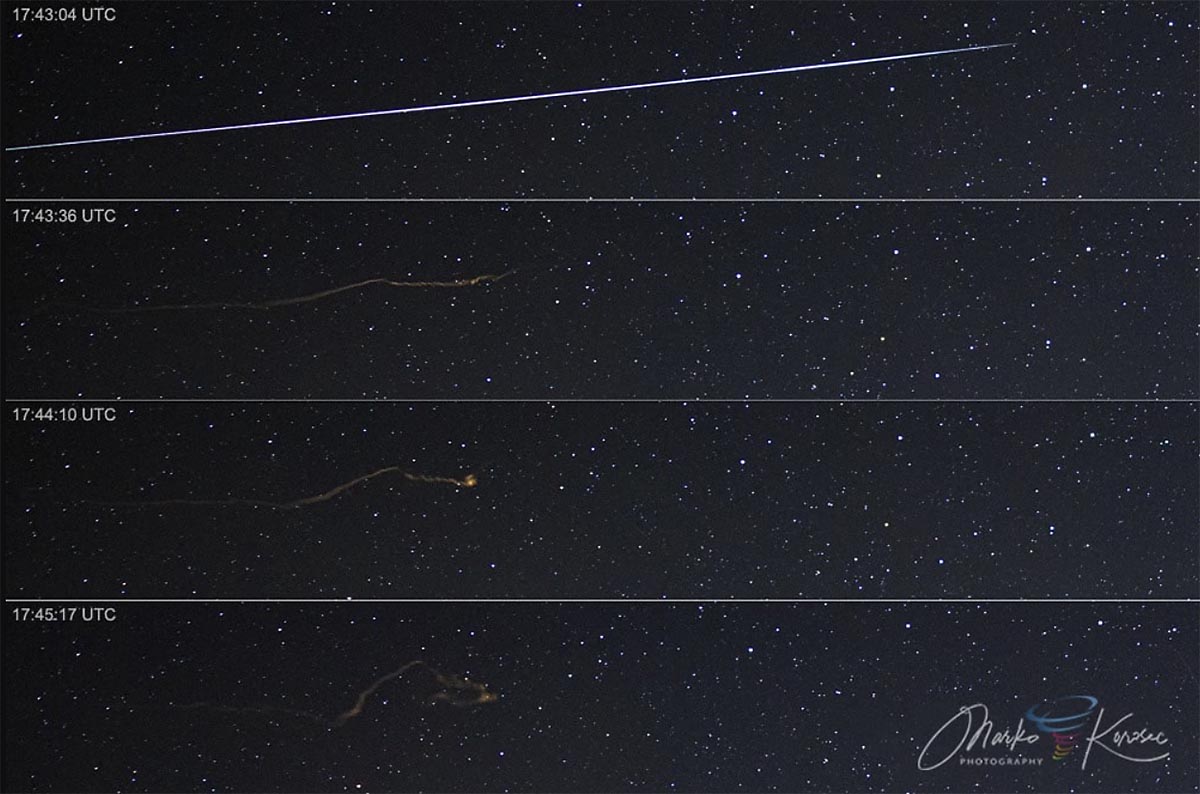
HOW TO SPOT THE PERSEIDS?
To find the spot where the Perseids are coming out in the sky is actually pretty simple.
All the meteors will look like they come from a point in the sky in the constellation Perseus. If you trace all the Perseid meteors backward, they all seem to come from the constellation Perseus, near the famous Double Cluster. Hence, the meteor shower is named in honor of the constellation Perseus the Hero.

This point in the sky is called the radiant. The higher the radiant is in the sky, the more meteors appear.
PERSEID METEOR SHOWER OBSERVATIONS DURING THE PEAK IN 2021 – NO MOON THIS YEAR
The best opportunities to see the Perseids will indeed happen on the peak night and one night before the peak. After last year’s Moon shining in the night sky and washed most of the show, this year is much much different.
In 2021, both the United States and European observers will be lucky with the Moon. After several years, the peak activity around Aug 12 and 13th happens without the bright Moon in the sky. The Moon sets in the evening hours, giving us dark observing times throughout the night.

However, this means that the following 10 days will have the Moon during the second half of the night, so observations will not be good until about a week before the peak activity. After around August 6th, the Moon rises after 3 am of your local time, giving us a better time to observe from the evening until then.
Once we come close to the peak nights, August 11th, 12th, and 13th will have literally ideal conditions for observing the Perseid meteor shower celestial show. No Moon will interact with the dark sky. The only thing we need to cross our fingers is that we get a cloudless sky.
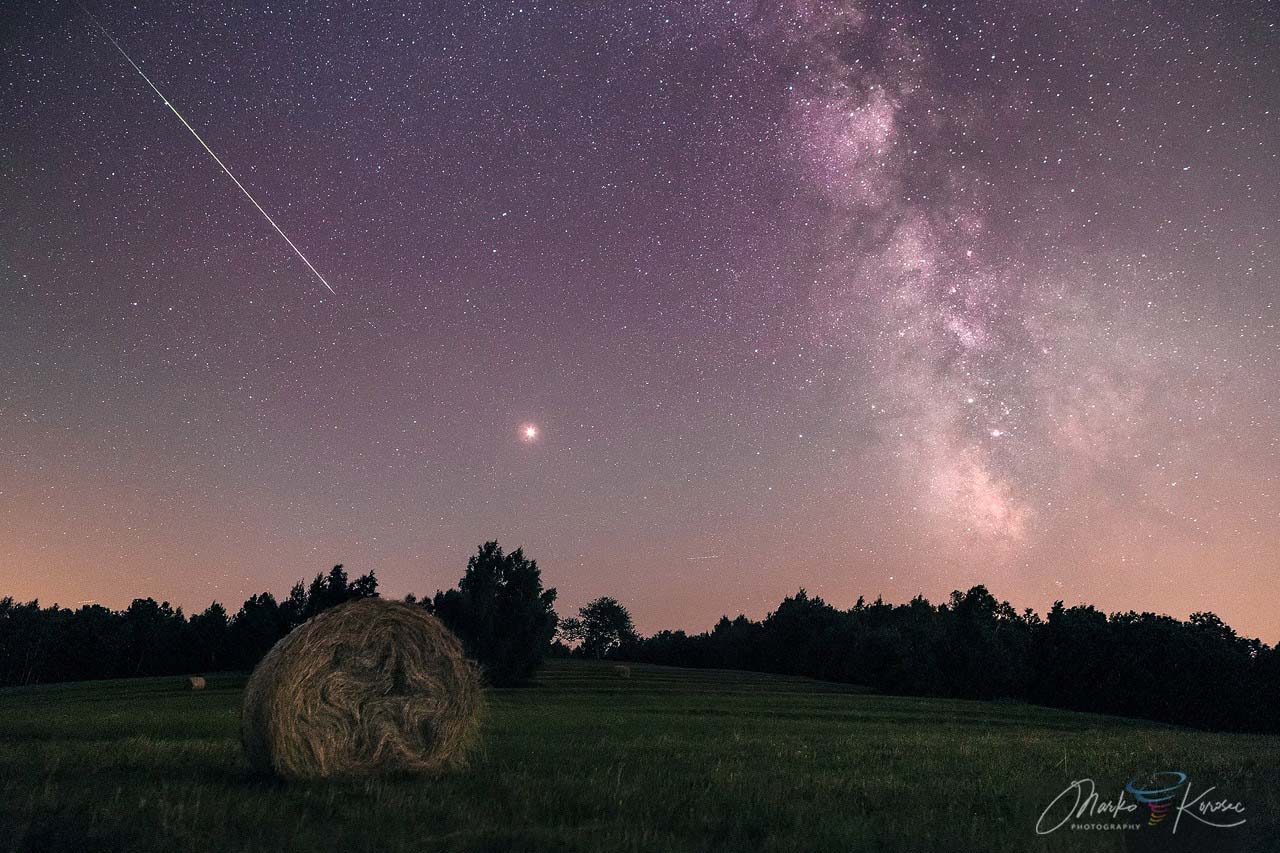
For observers at mid-northern latitudes (hence the meteor is best seen from the Northern Hemisphere), the Moon rises in the morning and sets in the evening, giving us a number of hours to enjoy this spectacular celestial show.
The Perseids’ radiant is visible all night, but it keeps rising higher during the second half of the night, so more meteors are visible. To observe or photographs the Perseid meteor shower, find a spot with the clearest skies possible, away from the city lights.
If you have an option, get to higher observing locations in the hills or mountains: the sky will be clearer and darker there, you will be able to see the highest number of meteors from up there.
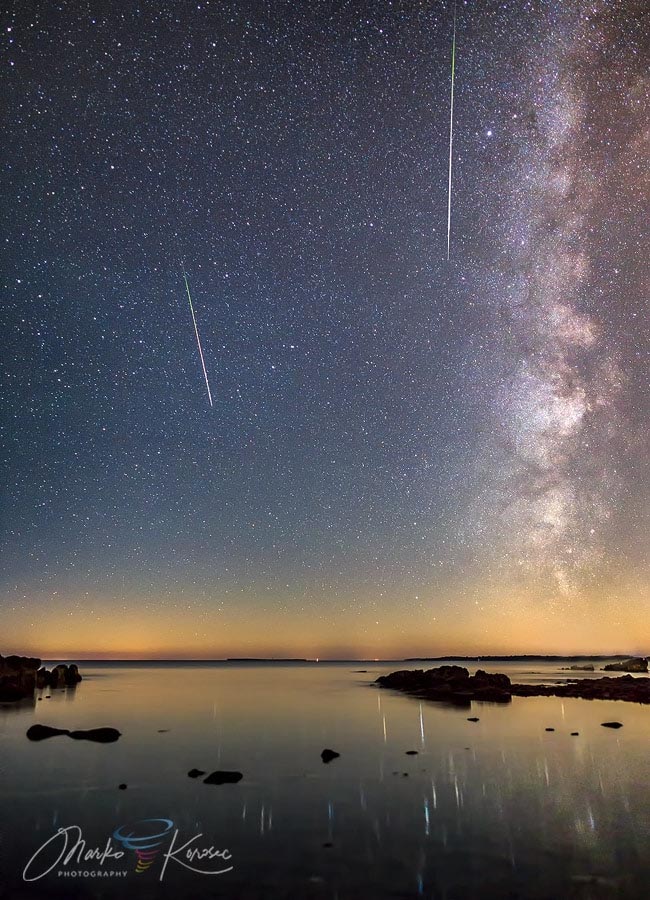
METEOR PHOTOGRAPHY – HOW TO PHOTOGRAPH A METEOR SHOWER
It is always great to see some spectacular meteors that photographers catch with their cameras. Tempting to try it yourself? If you are interested in photographing the meteors, let us give you some tips.
No matter which meteor shower you observe, it is always loads of fun. And with a bit of luck, you can catch a big, bright meteor – a fireball! Here is how you can get that shot too.
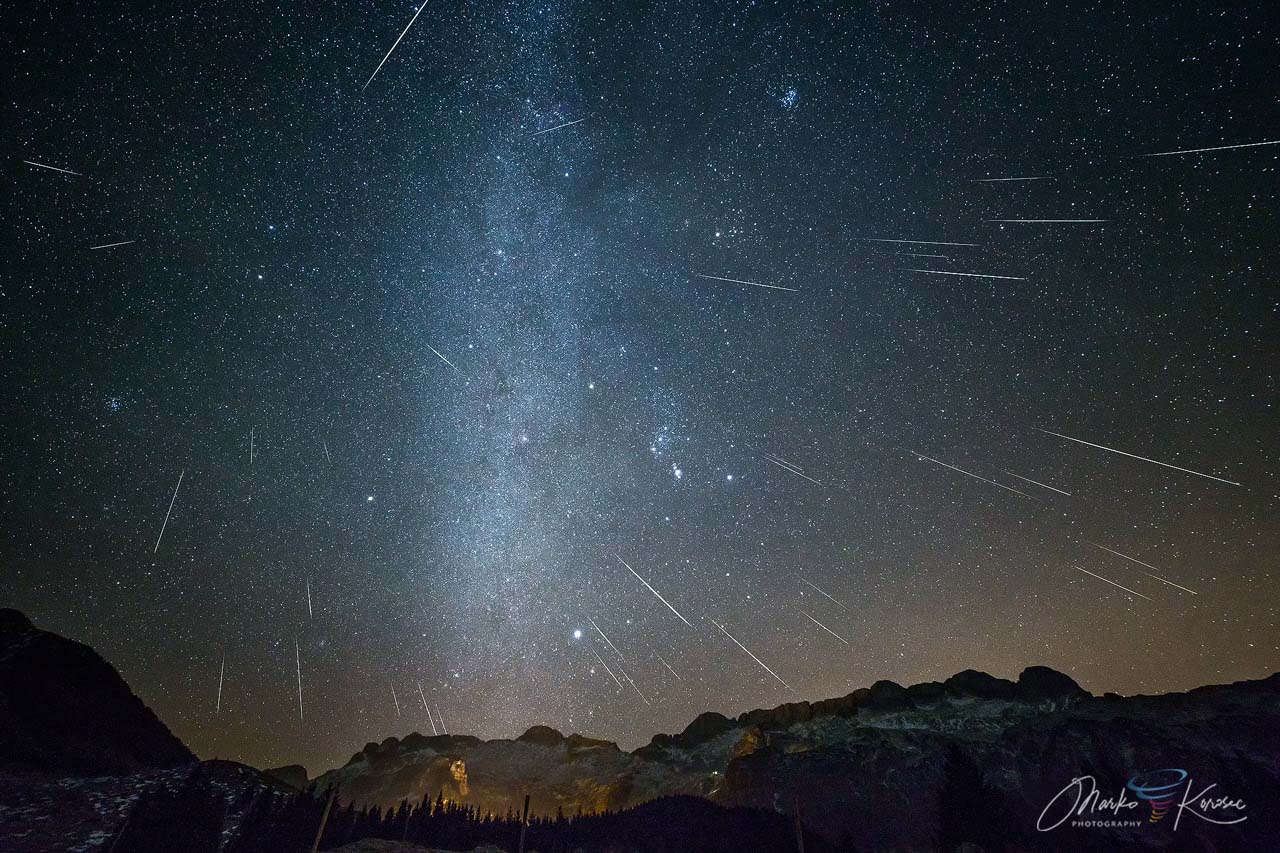
WHAT EQUIPMENT DO WE NEED
Basically, we just need a camera, lens, tripod, and some luck. But when it comes to meteor photography, some more specific equipment is necessary to get the best results out of your photography attempts.
- A digital camera with the option of making long exposures. Any interchangeable lens camera (DSLR or mirrorless) will have this option, including compact cameras and some phone cameras nowadays can also take long exposures
- A tripod. The stronger, the better. Especially if you plan to photograph in the higher elevations where winds could be stronger
- A remote trigger for the camera (or timer) that helps you to photograph continuously and without shaking the camera when pressing the shutter button
- And indeed… a meteor shower. Preferably the highest activity possible, so during the peak nights

HOW TO PHOTOGRAPH – CAMERA SETTINGS
The best time to photograph meteors is during a maximum (know as shower’s peak) of major events, such as the and Perseid meteor shower, Geminids, or Quadrantids. Moderately strong meteor showers, such as the Lyrids, Southern Delta Aquarids, Orionids, Taurids, Leonids, and Ursids could also be quite a show too.
When photographing meteors or a basic night sky, avoid using Auto and preset scene modes. You need to be in control of the camera.
Set the camera mode to long exposure. There are several ways about it and they may vary depending on your camera brand, but these things are normally pretty simple. One of the modes is the M – Manual. Some cameras may have B – Bulb mode as well. This mode allows you to use a remote trigger to do exposures of any length you want.

The other camera mode that is useful is the shutter priority mode (Tv or S). With this mode, you can select the exposure time for your photo. And the camera will do the rest.
All interchangeable lens cameras have these photography modes, regardless of the brand – Canon, Nikon, Pentax, Sony, or any other, you will be just fine.
HOW TO PHOTOGRAPH – CHOOSING THE RIGHT LENS
Virtually any wide-field or standard lens will do its job, and so will any mid-range zooms. Most entry and up to prosumer crop sensor (DX or APS-C) cameras come with a mid-range kit zoom lens, which is usually between 16 and 18 mm at the wide end and f/2.8 to f/3.5. These are fine for meteor photography.
The standard 50 mm lens is fine too, and many of them have the aperture pretty wide open, usually f/1.2 to f/1.8. This lens can gather a lot of light, so they can capture fainter meteors than mid-range zooms. Indeed, the downside of these lenses is the small field of view, particularly on crop sensor cameras.
50 mm will not be too bad, but do not use longer focal lengths as the field of view becomes too small. In other words, you are photographing are very narrow part of the sky and will miss many meteors.
The best lenses for meteors are the recently released wide-field lenses with maximum aperture f/1.4 to f/2.0, available from several brands (Samyang, Rokinon, and, especially the Sigma Art lens).
Use a sufficiently high ISO setting to capture meteors, 1600 or higher will be good enough. How far up the ISO scale you want to go depends mostly on your tolerance for noise and indeed the camera model. The recent cameras from various brands all have pretty good performance of ISO, as sensors have improved a lot over the years.

So now you are able to set up the camera with all the optimal settings. Prepare the camera and mount it on the tripod and make sure that the camera is leveled. Look through the viewfinder and make sure the horizon is perfectly on level.
The next is to focus on the lens. The easiest way to do it is to set it to manual focus and focus it on a distant light source or a bright star. Do use the live view (with maximum magnification) for this, as it makes the focusing job much easier.
Once you have the lens focus set, keep them in manual focus mode to avoid the camera refocusing. Always switch the Image stabilization (IS) as well. Set the aperture to the lowest possible (fully open) and set the ISO.
You are ready to go. Be aware that you will take hundreds of photos before catching the first good meteor. Patience is the key in meteor photography. As the more persistent you are, the more likely you will be able to catch a bright meteor!
Check the photograph above. It shows what a typical meteor will look like. A streak of light, likely greenish tint. Unlike the weather or communication satellites, a meteor will have a relatively smooth light curve – brightening steadily, brightest in the second half of its trail, a more steep brightness drop-off at the end.
Brighter meteors can be punctuated by irregular brightness flares.
SOME ADDITIONAL PHOTOGRAPHY TIPS
These settings above were more or less the basic ones, that we can get you into this interesting field of photography. Let’s see more tips on how you can be even more successful and get the best results.
Don’t get the background (sky) too bright, as you want a good contrast between the sky and the meteors. Typically keep an eye on a histogram that has a peak around 1/8 to 1/6 full (left to right) which is considered optimal. This will depend on the lens you use, the ISO setting, and how dark your sky is. Fast lenses and high ISO settings will get your background bright faster. A bright, light-polluted sky will also get the background bright faster. An f/2.8 lens at ISO3200 under a good rural sky will take about 20-30 seconds.
Very fast and fully open lenses, e.g. the f/1.2 to f/1.8 lens will produce the best results under dark skies. Brighter, light-polluted skies will saturate the background quickly and meteors will have less contrast.
Do not use too short exposures. The shorter you go, the more likely you are to get a ruined photo by ending the exposure in the middle of a bright meteor. This is extremely frustrating. With a 10-second exposure, you will probably ruin 5-10% of meteors. So keep it at 15s or more.
Keep your horizon in the photo as there are many bright meteors that appear close to the horizon. This is because you are looking through a larger volume of the atmosphere close to the horizon than overhead. If you use a 50 mm or another longer focal length, fast prime lens, keep your field close to the radiant. Otherwise, meteors will be too long to fit into your field of view.
Turn off your High ISO noise reduction. You can do noise reduction in post-processing.
Turn off your Long exposure noise reduction. At this setting the camera makes a dark exposure for every photo you make – you will only photograph the sky for 50% of the time, missing half the meteors. There are few things as frustrating as missing a superb meteor while your camera is making a dark exposure.

Preferably, take photographs in RAW format, or the RAW + JPEG combo. It pays off to have a RAW photo to edit later. Much easier than the JPEG format, no doubt about it.
Keep your white balance on AUTO. It typically works best. You may want to change to a warmer setting (some photographers prefer 3700 K) under light-polluted skies. Or if there is variable cloud cover and the clouds are illuminated by light pollution or if your camera is having trouble keeping the white balance constant. As you are taking photographs in RAW format, you can correct the white balance in post-processing later.
Use Live View and point the camera to a bright star or very distant lights to focus your lens. Make absolutely sure your focus is dead on. Keep your camera and lens in manual focus mode, otherwise, it will try to refocus once you start your exposures and your photos will be out of focus.
Try to avoid areas with moist air and better find a hilltop or a ridge, avoid depressions and valleys. Once your lens dews up it is next to impossible to keep photographing. You can leave a spare lens in your car and use it as a replacement once your first lens dews up. Get the other lens into the car to warm it up. Alternatively, lens warmer bands are available by a number of suppliers: they run on batteries and keep the lens just warm enough not to dew up.
Bring backup batteries. And spare memory cards. All of them. You don’t want to run out of batteries or space for the peak activity.
Cameras do not see meteors as well as your eyes. A fairly bright meteor, as bright as the brightest stars, will register on your photo as a faint streak of light. You will need a really bright one to produce a beautiful photo. Only if you use very fast lenses and very high ISO settings will even moderately bright meteors look significant. But do not be discouraged, with a little luck and perseverance you will get a great photo!
WHAT TO EXPECT
As you are now really to get to the field, what can you expect? First of all, be ready to take many photos before a good catch of meteor will appear. Be prepared to spend at least an hour or two under the starry sky to catch a good one, even in the strongest of meteor showers, like the summer’s Perseid meteor shower is or the Geminids in winter.
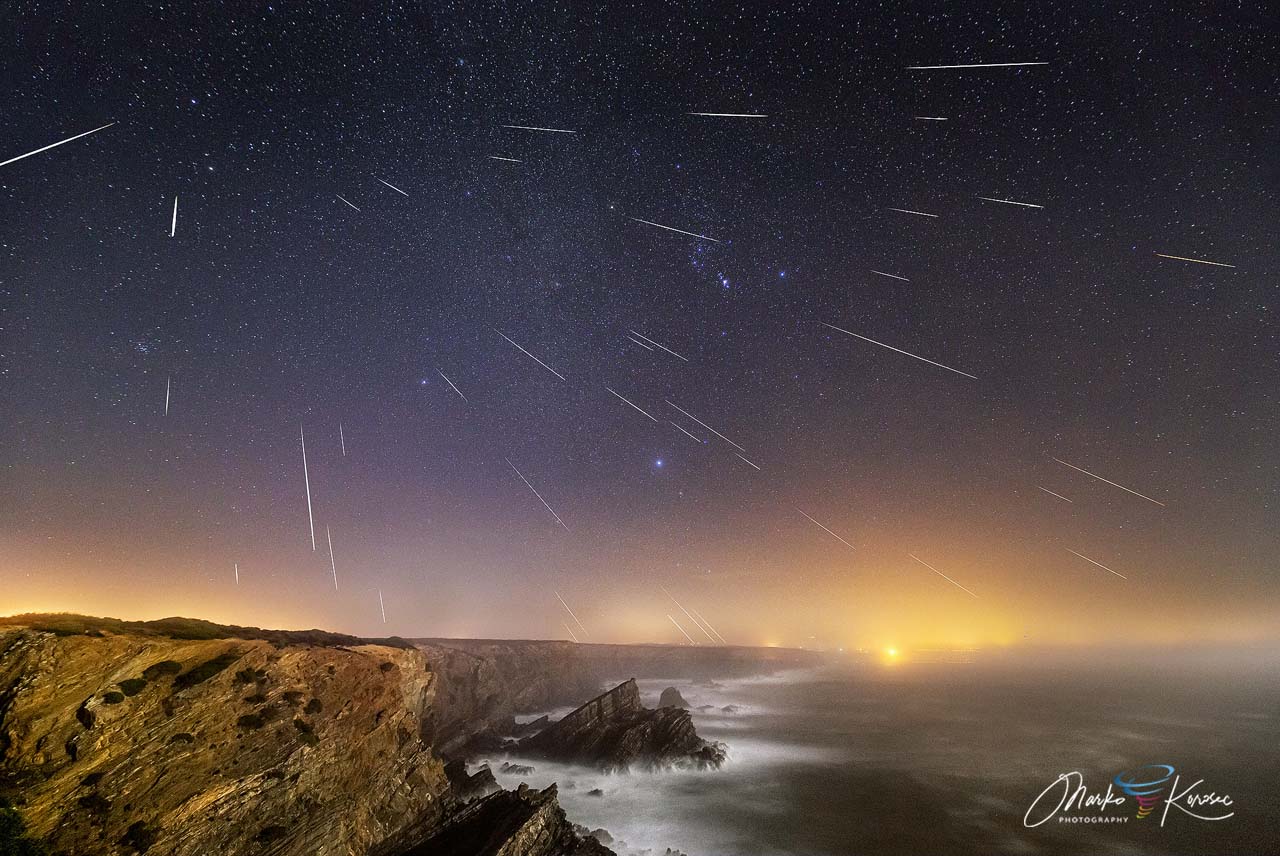
Moderate meteor showers like the Lyrids or the Orionids take even more time as their hourly rate is lower compared to the most famous meteor showers. But patience does pay off. The more time you spend photographing meteors, the better are the chances you will finally catch a good one, even a fireball.
Photographing a Perseid meteor shower can often bring hours and hours of taking hundreds or even thousands of photos. But, when things go right… whoa! Imagine you catch an exploding fireball? You will forget all the waiting until then!
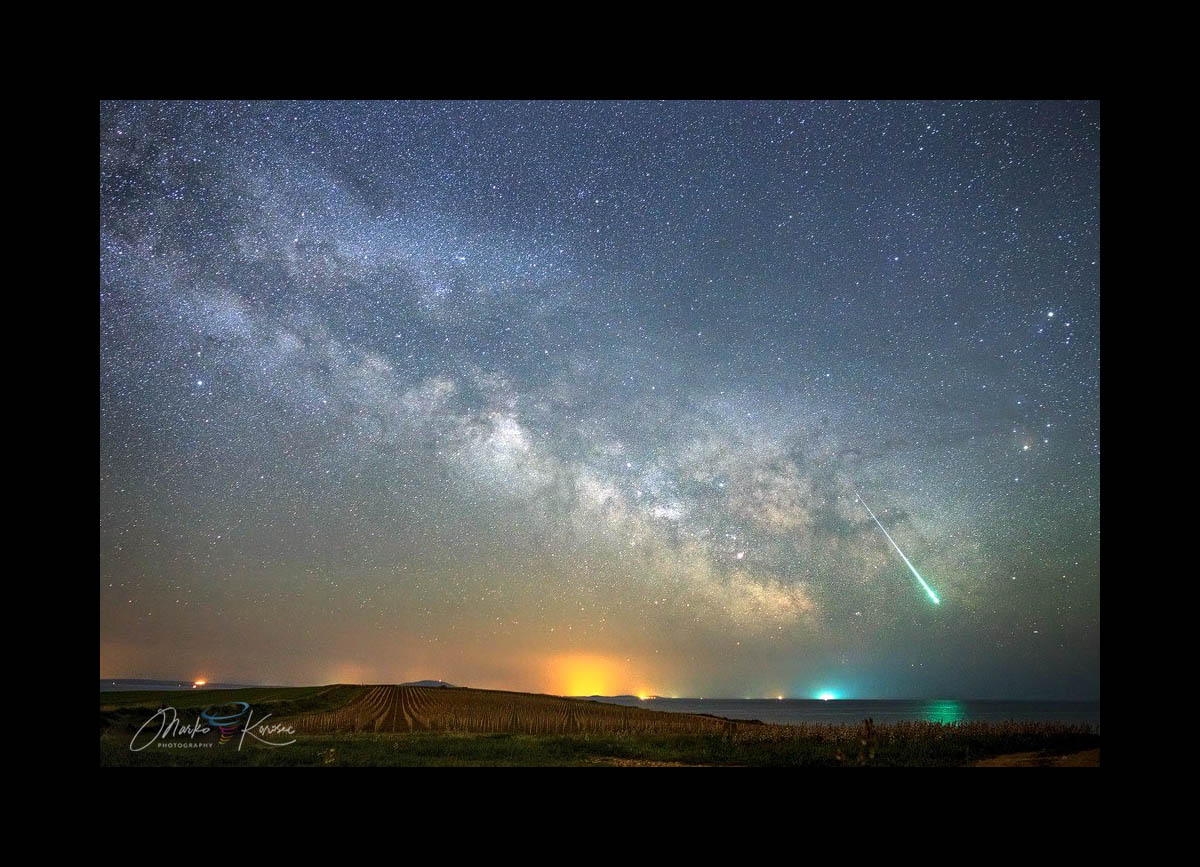
CONCLUSION – PERSEID METEOR SHOWER 2021: A SPECTACULAR DISPLAY
What can we say at the end? The Perseid meteor shower is one of those celestial events you don’t want to miss it. Seriously!
The summer months are often disturbed with daytime thunderstorm activity, the remaining clouds often extend into the nighttime hours. But weather patterns are changing, so we might get lucky and see stable weather with low cloud coverage and thunderstorm activity around the peak.
Perseid meteor shower this year is expected to produce around 100-120 meteors per hour during both nights around the peak this year, happening on August 12th and 13th. The Perseid’s main peak occurs from August 12th, 14 UTC to August 13th, 03 UTC.
So this is almost as perfect as it gets for both the European and the North American continent.
And what is also one of the greatest things coming up with this year’s Perseids is that they finally coincide with a nearly new Moon, so moonless nights are expected. Therefore, the Perseid meteor shower peak will happen with basically ideal conditions and we are up to a unique and spectacular celestial show this year. We just need to get clear skies.
*ENJOY* your observation and thanks to New Moon, this could potentially be the greatest Perseids celestial displays in years.
Feel free to report your observations to our Facebook SWE Report / Discuss group and if you catch some of them, we will be happy to share those with our followers for you!
Like the astronomers and astrophotographers would say – CLEAR SKIES!